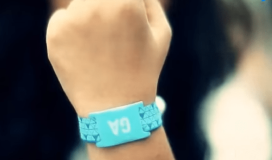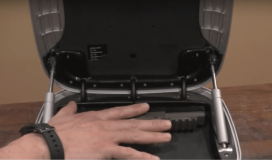An RFID Connect reader named Carrie responded to my recent blog, Is There an Untapped Pool of RFID Customers Somewhere?, by saying: "I believe there is a great pool of untapped customers for RFID-based solutions, but that the vast majority would never think to read RFID Journal or attend RFID Journal LIVE! because they do not know that what they need is RFID. They have painful problems, and it is solutions to those problems that really drive adoption. Look at the proliferation of location services on smartphones—it is not about GPS, but about maps and local deals, etc. "
I responded to her post briefly, but I think it's worth addressing here in greater depth, as I know that others share her belief.
First, let me note upfront that my reason for posting my original comments was not that I wanted or expected people to market only through RFID Journal. There are other RFID Web sites at which one might find potential buyers of radio frequency identification systems, and it is always useful to attend non-RFID events to evangelize the technology. But by helping RFID technology providers better understand the market, I hope they will have more success and grow stronger (and, thus, be in a better position to spend more marketing dollars with us down the road).
Carrie's comment presupposes several things:
It presupposes that RFID Journal does not market outside its own readership. We do, and we always have. Our marketing is based on the concept that people have problems RFID tags can solve, and we have many real-world examples of how those with similar problems have employed the technology to solve them.
For our health-care events, for example, we purchase lists from the American Hospital Association, as well as from regional hospital associations. We target executives responsible for tracking hospital equipment, which is a big problem that all medical facilities share and that RFID can help to solve. Our message is this: "You face challenges tracking your equipment. Come hear how hospitals have solved that problem with RFID. " Unfortunately, those mailings do not earn us many attendees. It's surprising, because we are not asking them to spend a million dollars on a solution. We are simply asking them to spend some money to learn whether RFID is the answer to their problems. That the vast majority don't come suggests that they are not ready to deploy an RFID system any time soon.
It presupposes that nine years after Wal-Mart put RFID on the map, people still don't know what the technology is or what it does. That might be true, but my experience suggests otherwise. I have spoken at more than 200 industry events throughout the past decade. During the early days, many folks didn't know much about RFID. Today, however, most know what it is and what it can do, and most believe they will use it one day—just not now.
It presupposes that people don't know how to use Google. If you have a business problem, you can type "tracking returnable transport items" or "tracking blood" or "tracking tools" into a search engine to find out how others are addressing these concerns. And you will likely find articles about how RFID is solving these problems. In fact, that is how we obtain the vast majority of our readers.
It presupposes that RFID vendors are poor marketers. OK, so let's assume RFID Journal is just bad at marketing, and that we can't convince people with business problems to learn how RFID can solve them. So what about all the hundreds of RFID firms that attend vertical-industry shows and exhibit systems that can solve problems? Why can't they convince a significant number of people to deploy their solutions? I know they can't, because they never go back to those events, and because most RFID companies are currently struggling financially.
The overwhelming evidence suggests that while Carrie's logic may make sense, her thesis just doesn't hold water. Our data indicates that people conduct a lot of research before deploying an RFID system. On average, it takes two years from the time that someone registers on RFID Journal until his or her company pilots or deploys a system.
We have 90, 000 active registered users on our site. Of those, roughly 70, 000 come from end-user companies (the others are academics, students, consultants or RFID solutions providers). These are individuals who clearly know what RFID is, and how it can help solve their business problems. And they are at all stages of adoption, from just starting their research to completing major rollouts.
There are certainly others looking into deploying RFID systems. And it's always possible that a vendor might bump into someone at an event who has a serious problem and is ready to jump at a solution. But finding these individuals is extremely unlikely—I don't think it makes for a smart marketing strategy to wait for that to happen.
As the technology becomes easier to deploy, the adoption cycle will shorten. Carrie's point about location services is interesting. I wrote about location services in 1995—using a search engine to find, for example, nearby florists—while working at CMP Media. It took 10 years for that capability to find a mass market on cell phones. All technologies take time to become so simple that they can be adopted en masse.
A complex technology, such as radio frequency identification, takes time to evolve, says Geoffrey Moore, the author of Crossing the Chasm and Inside the Tornado, two best-selling books explaining how new technologies become mainstream. That's because the more complex it is to deploy a system, the more risk is involved. So even if a new technology can solve your problems, if the solution is complex, the vast majority of businesses will shy away from the risk. The iPhone made it simple for a person to stand on a street corner and pinpoint the nearest Staples or sushi restaurant.
If RFID were much simpler to deploy, then the vast majority of companies that experience problems tracking assets or inventory would implement the technology sooner. Many solutions providers are working toward complete products that could reduce complexity and risk for users. Progress is being made, and we are seeing the results in enterprise deployments, such as those undertaken by American Apparel, Bell Helicopter, Cisco Systems and John Deere, which will be showcased at this year's RFID Journal LIVE! conference and exhibition, being held on Apr. 3-5, 2012, in Orlando, Fla. Many firms are also deploying RFID to solve specific business problems, such as tracking assets or hospital equipment.
I wish Carrie were right. I wish all we had to do was to show people that RFID can solve their business problems. But 10 years' experience has taught me that it will take more than that. We are getting there, but we need to build the critical mass that Moore discusses, one customer at a time, and that means focusing marketing efforts on those most likely to deploy.



